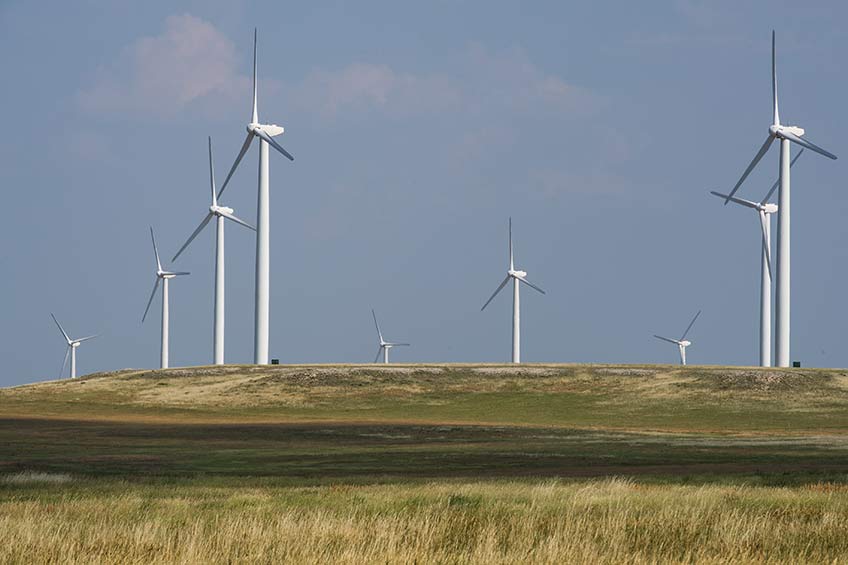New NREL Tool Can Help Maximize Wind Farm Power Production and Reliability

FAST.Farm, a new modeling tool from NREL, will help users predict the power performance and structural loads of wind turbines within a wind farm, enabling them to maximize the farm’s power production and reliability. Photo by Dennis Schroeder, NREL
A single wind turbine’s ability to convert wind into electricity is a marvel of engineering, but all the interactions among the turbine’s components, as well as the force of the wind on the turbine, put significant forces and moments—also known as load—on the entire structure. And in a wind farm, where one turbine may be surrounded by many other turbines, all downstream turbines are impacted not only by turbulence and changes in wind speed and direction with height, but also by the wakes created by the upstream turbines. This places additional load on each turbine in the farm and can impact the power production and reliability of the entire project.
A new tool from the National Renewable Energy Laboratory (NREL) can help.
NREL recently released FAST.Farm, a mid-fidelity, physics-based engineering modeling tool for predicting the power performance and structural loads of wind turbines within a wind farm. An extension of OpenFAST, NREL’s open-source wind turbine engineering tool, FAST.Farm addresses the dynamics of, and interaction between, each individual turbine in a wind farm. FAST.Farm also considers the physics of farm-wide ambient wind in the layer of the atmosphere in which wind turbines operate, changes in wake shape with downstream distance, wake movements caused by background turbulence, and farm-wide control. The wind farm can be land based or offshore with fixed or floating support structures. Within the newly released FAST.Farm repository, users can access models, documentation, and a complete code base.
As a mid-level-fidelity modeling tool, FAST.Farm is meant to be used at the detailed level of wind turbine design for everything from an individual turbine’s components and controller to the super controller that controls the entire wind farm. Users can simulate the conditions each turbine in a wind farm will need to withstand throughout its lifetime, or users can start fresh and design an entire wind farm to achieve minimal structural load and maximum power production.
“FAST.Farm takes the whole concept of design from the individual turbine level to the wind farm level,” said NREL Mechanical Engineering Researcher Jason Jonkman, who led FAST.Farm’s development. “We’ve had great interest from the wind industry and research communities.”
FAST.Farm’s capabilities make it a useful tool for a wide range of users. Turbine designers, offshore substructure designers, and consultants can use the tool to predict structural loads of turbines in full wind farm settings. Certification bodies in the United States, some of which already use OpenFAST to do structural certification of turbines, can use FAST.Farm for farm-level loads certification. Researchers and developers, whether in industry, academia, or government, can use FAST.Farm for design research at the farm level.
“We can also see wind project developers using FAST.Farm to work with turbine suppliers to predict how the placement of one turbine will affect the viability of turbines downstream,” Jonkman said. “That level of analysis was previously not possible, so we’re excited to be able to provide that support.”
Now that FAST.Farm is publicly available, Jonkman and the FAST.Farm team will continue to deepen their understanding of the factors that impact turbine loads, incorporate features that address physics limitations or account for new turbine- or farm-level technology, and advance the turbine and wind farm design process.
“We hope that FAST.Farm can help improve wind turbine and wind farm design, which means improving how the wind industry goes about doing turbine design at the farm level,” Jonkman said. “As that process evolves, FAST.Farm will evolve with it.”
FAST.Farm is now available through OpenFAST on GitHub.
Last Updated May 28, 2025
